Have you ever had a conversation you wish you could have practiced beforehand? We’ve all been there. Performance reviews, sales negotiations, asking for resources, or a raise can be incredibly awkward and challenging to navigate. That’s where tools like Rehearsal come into play, helping you practice and develop your soft skills before you ever have a conversation with a real person. This is exactly what we covered in this Learning Lab LIVE session.
During our time together, we looked at two connected aspects of Rehearsal that help you develop skills with practice before you have to perform the conversation in the real world (with real consequences). During the webinar, we previewed Rehearsal’s asynchronous video coaching and practice, as well as the new AI Roleplay feature.
Asynchronous Video Coaching
At its core, Rehearsal has traditionally been a video coaching and practice platform. Meaning, you are having an asynchronous conversation through video submissions that meet the criteria of a certain prescribed assignment from a mentor or coach. They, in turn, provide their own feedback, guiding you through the completion of the assignment.
Another important aspect is that learners can practice their responses as much as they want before submitting them to the system. Allowing them to delete any attempt they don’t feel confident in, without it being seen by another human being.
AI-Powered Feedback
Once submitted, responses go through an AI analysis that provides:
- Transcript generation for review
- Alignment assessment against response criteria
- Specific feedback on what to improve
- Option to retry before sending to a mentor
This AI pre-screening helps learners refine their responses before human coaches invest time in detailed feedback, making the entire coaching process more efficient.
The Coaching Cycle
After AI feedback, submissions can be sent to designated mentors who provide personalized coaching. This asynchronous back-and-forth continues until the learner demonstrates proficiency, at which point final evaluation grades are issued, completing the cycle.
Enter AI Roleplay
While asynchronous practice and coaching are useful in a variety of scenarios, in this session, we took a peek into the future of performance-based practice. AI Roleplay is now available for early access with current Rehearsal customers.
Real-Time Conversation Practice
Unlike the submit-and-wait model, AI roleplay enables live dialogue with AI characters who:
- Respond in real-time to what you say
- Adapt their behavior based on your approach
- Provide ongoing feedback during the conversation
- Evaluate performance against specific goals
During the session, we demonstrated a performance-coaching scenario with "Alex," a 10-year call center veteran struggling to meet call volume targets. The AI character exhibited realistic defensive behaviors, requiring empathy and rapport-building to make progress.
Dynamic AI Responses
The AI doesn't follow a script—it adapts. When approached with empathy and understanding, Alex became more open to suggestions. When given dismissive feedback ("just figure it out"), Alex pushed back, requiring more constructive engagement.
This adaptive behavior creates genuine opportunities for practice, where the "right answer" isn't memorizing a script, but developing authentic communication skills that work across different responses and resistance levels.
Performance Analytics
After each roleplay session, learners receive a detailed analysis of their behavior:
Goal Achievement: The system evaluates whether you met specific scenario objectives (like building rapport, identifying barriers, or establishing next steps) and explains why you did or didn't succeed.
Skill Metrics: Beyond scenario-specific goals, the platform assesses broader communication skills like confidence, presence, call control, and clarity.
Targeted Feedback: The system highlights specific moments where different approaches might improve outcomes.
Learners also have the ability to look back at session history to see trends in their performance over multiple roleplay sessions with a particular character. The analytics can help point out areas of focus for future practice sessions.
Building AI Roleplay Scenarios
We also looked at how to create one of these Roleplay environments from an authoring perspective. Note that what we showed is early production and is meant to be functional, not necessarily the final product. This process will be refined over time. But in essence, the authoring experience for AI Roleplay involves several key components:
Environment Setup
- Introductory video to establish the context (optional but recommended)
- Description to explain the situation to learners and AI
- Goals to define learning objectives (2-5 recommended)
This information provides the learner with their objectives and the AI with the context in which it's operating.
AI Character Configuration
This is the critical component that brings scenarios to life. Character setup includes:
Background and Context: Who is this person? What's their role, tenure, current situation?
Tone and Personality: Are they defensive? Eager to learn? Frustrated with previous management? Proud of their experience
Behavioral Instructions: Specific "if-then" statements that guide responses:
- "If the learner approaches with empathy, show openness to suggestions"
- "If the learner is dismissive, become more defensive"
- "Share personal barriers if prompted appropriately"
Wrap-up Guidance: How should the conversation conclude based on learner performance?
The Generate Feature
Rather than writing all character details manually, you can provide a brief prompt and use the generate button to expand it into comprehensive character instructions covering tone, behaviors, and wrap-up approaches. This accelerates scenario development while maintaining customization options.
Voice and Appearance
Select from available AI voices and character images to create the visual and verbal presence learners will interact with during practice sessions.
Development and Timeline
Creating an AI roleplay environment typically takes about an hour, including:
- Writing the scenario setup and goals
- Configuring AI character behavior
- Testing and refining AI responses
- Adjusting instructions based on how the AI actually responds
The iterative testing is important—you'll learn over time how to write prompts that generate the behaviors you want from AI characters.
The Complete Solution
Rehearsal combines AI Roleplay (practice room) and video coaching (performance evaluation).
AI Roleplay = Practice Room. High-volume, repetitive practice with immediate feedback in a safe environment to facilitate skill development.
Video Coaching = Performance Evaluation. Expert human feedback, detailed guidance, formal assessment, and evidence of proficiency.
Together, they mirror the development of performance skills: extensive low-stakes practice followed by assessed competence.
Practical Applications
We demonstrated the software for a workplace coaching scenario, but the platform can handle any interpersonal communication: sales, customer service, crucial employee conversations, negotiations, presentations, interview prep, and more. Flexibility comes from configuring AI characters to be compliant or highly resistant, matching real-world challenges.
Key Takeaways
- Practice Builds Confidence: Repeated attempts in a safe environment transfer skills to real-world performance.
- AI Enables Scale: Real-time AI roleplay provides unlimited practice without the need for a human coach for every repetition.
- Human Coaching Adds Depth: AI handles high-volume practice, making expert human feedback more effective.
- Adaptive Behavior Matters: AI that responds realistically offers better practice than fixed scripts.
- Authoring is Evolving: The focus is currently on the learner experience as authoring tools are developed.
Are you registered for the next Learning Lab LIVE session? You don't want to miss our next exploration into ELB’s latest tools and techniques, from rapid authoring and gamification to VR training and beyond. Get in the lab.
Have questions about Rehearsal or AI roleplay? Want to see it in action for your specific use cases? Feel free to reach out. These tools work best when customized to your organization's actual challenges.
Interested in early access to AI Roleplay in Rehearsal? Contact your ELB customer success manager to learn more about participating in the early access program.







